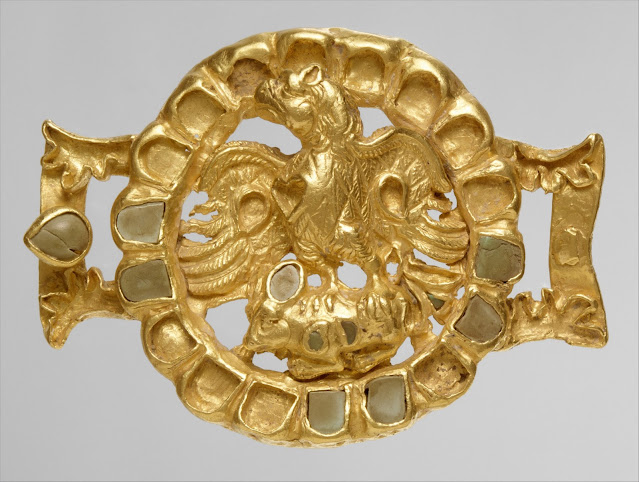Parthian metalwork from ancient Nahavand (Nihavend)
Nahavand, located on the fertile Nisaean plain in the southernmost part of ancient Media (modern day Iran), has been inhabited since at least 5,000 BCE. According to the ancient geographer and historian Strabo it was (re-)founded by Achaemenid King Xerxes the Great. Nahavand lay about 96 kilometers from Ecbatana on the trunk road from Babylonia through Media to Bactria. In the Seleucid period, it became a Greek polis with magistrates and a Seleucid governor.
According to the polymath Abu Hanifa Dinawari, in the Parthian period, Nahavand was the seat of the Parthian prince Artabanus, who later reigned as Artabanus I of Parthia from 127 to 124/3 BCE. After Artabanus was killed in battle, he was succeeded by his son Mithridates II (known in antiquity as Mithridates The Great) who transformed the Parthian Empire into a superpower.
Mithridates II was the first Parthian king to extend Parthian rule into Caucasus, where the kingdoms of Armenia, Iberia, and possibly Caucasian Albania became Parthian vassal states. To the east, he defeated and conquered the nomadic tribes in Bactria who had killed both of his predecessors. Sakastan was also reconquered and he seized Dura-Europos in Syria from the Seleucids, and by 95 BCE, the northern Mesopotamian kingdoms of Adiabene, Gordyene, and Osrhoene had acknowledged his authority. Under Mithridates II, the Parthian Empire at its zenith extended from Syria and the Caucasus to Central Asia and India. It was under Mithridates II that the Parthian Empire for the first time established diplomatic relations with Rome and Han China.
In 96 BCE Mithridates II sent one of his officials, Orobazus, as an envoy to Sulla. As the Romans were increasing in power and influence, the Parthians sought friendly relations with the Romans and thus wanted to reach an agreement that assured mutual respect between the two powers. However, negotiations followed in which Sulla apparently gained the upper hand, which made Orobazus and the Parthians look like supplicants, leading to the development of enmity that, 38 years later, culminated in the death of Marcus Licinius Crassus at the Battle of Carrhae. If only Sulla had been more diplomatic instead of arrogantly egotistical, the entire trajectory of Roman-Parthian relations, even subsequent east-west relations, could have evolved quite differently.
Images: Belt adornment with an eagle and its prey, 1st–2nd century CE, Parthian or Kushan, at the Metropolitan Museum of Art. Its mate from the same find spot along a gold necklace from Dailaman in the British Museum courtesy of Wikimedia Commons contributor Dominique Collon. I am a bit surprised that the bird-like figure is identified as an eagle because of its prominent ears. Met curators point to it as an example of Parthian contacts with nomadic cultures of the Eurasian steppes. Parthian art typically displays a blend of Hellenistic and earlier Near Eastern traditions. Perhaps the figure is a zoomorphic depiction of Garuda, a legendary bird or bird-like creature in Hindu, Buddhist, and Jain faiths. Garuda is generally a protector with the power to swiftly go anywhere, ever watchful and an enemy of the serpent.
Read more about Parthian art here:





Comments
Post a Comment